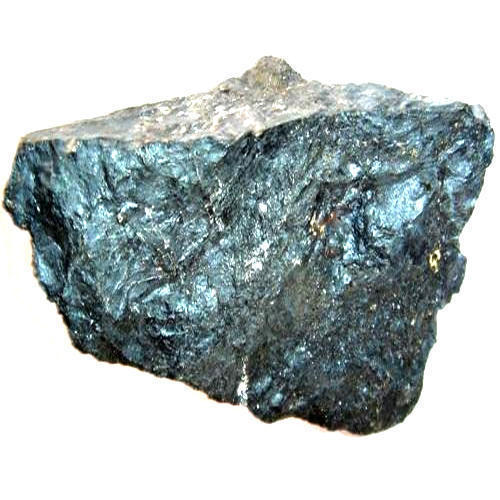Manganese Ore
Manganese is a key component in the production of steel. Although classified as a minor metal, the quantity of manganese produced worldwide each year falls behind only iron, aluminum, copper, and zinc.
| Atomic Symbol | : | Mn |
| Atomic Number | : | 25 |
| Element Category | : | Transition Metal |
| Density | : | 7.21 g/cm³ |
| Melting Point | : | 2274.8°F (1246°C) |
| Boiling Point | : | 3741.8° F (2061 °C) |
| Moh’s Hardness | : | 6 |

Manganese is an extremely brittle and hard, silvery-grey metal. The twelfth most abundant element in the earth's crust, manganese increases strength, hardness and wear resistance when alloyed in steel.
It is Manganese's ability to readily combine with sulfur and oxygen, which makes it critical in the production of steel. Manganese's proclivity to oxidize helps to remove oxygen impurities, while also improving the workability of steel at high temperatures by combining with sulfur to form a high melting sulfide.
The use of manganese compounds stretches back more than 17,000 years. Ancient cave paintings, including those in Lascaux France, derive their color from manganese dioxide. Manganese metal, however, was not isolated until 1774 by Johan Gottlieb Gahn, three years after his colleague Carl Wilhelm Scheele had identified it as a unique element.
Perhaps the biggest development for manganese came nearly 100 years later when, in 1860, Sir Henry Bessemer, taking the advice of Robert Forester Mushet, added manganese to his steel production process to remove sulfur and oxygen. It increased the malleability of the finished product, allowing it to be rolled and forged at high temperatures.
In 1882, Sir Robert Hadfield alloyed manganese with carbon steel, producing the first ever steel alloy, which is now known as Hadfield steel.
Manganese is primarily produced from the mineral pyrolusite (MnO2), which, on average, contains more than 50% manganese. For use in the steel industry, manganese is processed into the metal alloys silicomanganese and ferromanganese.
Ferromanganese, which contains 74-82 % manganese, is produced and classified as high carbon (>1.5% carbon), medium carbon (1.0-1.5% carbon) or low carbon (<1% carbon). All three are formed through the smelting of manganese dioxide, iron oxide and coal (coke) in a blast or, more often, an electric arc furnace. The intense heat provided by the furnace leads to a carbothermal reduction of the three ingredients, resulting in ferromanganese.
Silicomanganese, which contains 65-68% silicon, 14-21% manganese and about 2% carbon is extracted from the slag created during high carbon ferromanganese production or directly from manganese ore. By smelting manganese ore with coke and quartz at very high temperatures, the oxygen is removed while quartz converts to silicon, leaving silicomanganese.
Electrolytic manganese, with purities between 93-98%, is manufactured by leaching manganese ore with sulphuric acid. Ammonia and hydrogen sulfide are then used to precipitate unwanted impurities, including iron, aluminum, arsenic, zinc, lead, cobalt, and molybdenum. The purified solution is then fed into an electrolytic cell and through an electrowinning process creates a thin layer of manganese metal on the cathode.
China is both the largest producer of manganese ore and the largest producer of refined manganese materials (i.e. ferromanganese, silicomanganese and electrolytic manganese).
About 90 percent of all manganese consumed each year is used in the production of steel. One-third of this is used as a desulpherizer and de-oxidizer, with the remaining amount being used as an alloying agent.
Power by Enlink Trading Co. Pvt Ltd
Designed and Developed by Shopweb